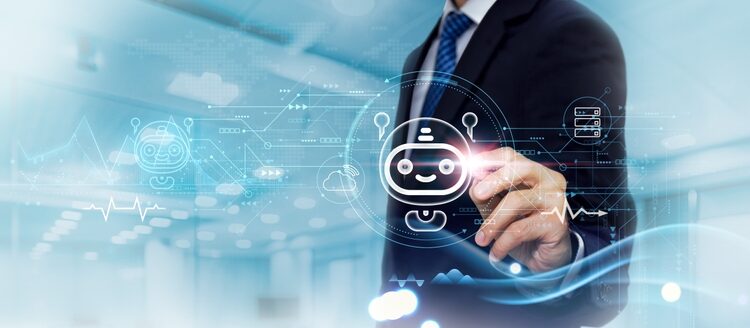Since the dawn of time, organizations and individuals have sought ways to gain an advantage. It’s why we’ve been in the ‘age of innovation’ for more than 200 years, and speed has often been key to finding that edge.
You can look as far back as the 1830s and the tale of how François and Joseph Blanc found an elaborate, albeit illegal, way to influence how information was transmitted from Paris to the stock exchange in Bordeaux. As bankers trading in government Bonds, they quickly realized they could make money by being one step ahead of their competition as information was passed along the mechanical telegraph system.
As optimistic technologists, we believe we are currently in the golden age of innovation – an age in which digital technology is transforming the underpinnings of human existence. During the last few months, and with the various roles technology has played in our collective response to the pandemic, we’ve seen why. Now, with technologies like Edge computing and ML/AI, we can look to what’s possible as businesses, Governments and even communities plan their next moves in a world that no one was prepared for.
Information + speed
What links the above scenarios is the speed of decision-making: the right person having the right information to make decisions, at the right time, and being able to act on this at speed.
And while a whole bunch of technologies is enabling this – cloud, mobile, networking among many – the use of ML/AI and edge computing in support of application delivery – so getting that information intelligently into the hands of users to effect change – can offer a wealth of possibilities in this new world we are trying to map out. The intelligent computing that ML/AI brings, combined with the movement of compute and data to the location where it is needed (that edge computing delivers), can improve response times and play a role in contact tracing and social distancing efforts to help people live and work, and businesses to operate, as close to normal as is possible.
In healthcare, AI is being embraced in track, trace and test applications to deliver accurate and real-time insights. This type of app can support the appropriate restrictions for small geographical groups in society where there are COVID infection outbreaks, rather than bringing a whole country to a stand-still. And in surveillance and monitoring, where AI is built into surveillance cameras, labourers could be monitored on building sites to ensure they are wearing face masks or protective clothing when it’s essential they do so – enabling the building industry to be operational, yet safe. Of course, this type of monitoring technology can also be used for more nefarious reasons. In fact, IBM recently said it would no longer be developing general purpose facial recognition technology in a push to control the ethics of emerging technologies. So, we need to specific and considered in our way forward, yet we should move forward and show how these technologies can be a force for good.
Take any transport network – which are vital to getting economies running again – and the reality that micro-managing massive volumes of people will be critical in a socially distanced world. Whether it’s the number of passengers on a train platform, the number of people on a bus, the capacity of the arriving and departing vehicles – all of these situations require split-second decision making to take into account the number of people and the various routes they will all be taking. This is a great use case for these emerging technologies. With this, an AI system combined with sensors could holistically assess demand management and identify pinch points in, effectively, in real-time. Thanks to the edge positioning, the AI-generated information could be relayed to staff instantly to implement rapid deployment of updates, re-routing or additional capacity as needed. By moving the application away from a cloud-based data center and to the edge, this can all be done in microseconds, rather than seconds or even minutes – the difference between the system working and not.
Elsewhere, in many countries shops are now open with strict social distancing measures. But managing large shopping malls – and the volume and flow of people – is a difficult proposition. Using multi-functional sensors to track human motion and traffic, applications at the Edge that use AI can help reveal and predict which locations are most likely to experience high levels of shoppers and relay information to teams who can put counter measures in place. This could be anything from curbing the numbers entering the mall in real-time, to automatically alerting security systems to restrict access when the maximum amount has been reached.
Then think about warehousing. A recent study among shoppers found a 96% increase in online orders from April 2019 to April 2020 (for comparison – March closed with a 21% YOY increase in order count).
Think about the pressure on the back-end warehousing and distribution, particularly at a time when staffing numbers are down? Even with minimal workers on-site, edge and AI technologies can support the scaling of activity safely – helping distribute workers most effectively all the while ensuring social distancing and, through predictive maintenance, detecting minor anomalies proactively and redirecting resources before any threat to operations and people becomes real.
An app-centric world
What all of these use cases show is that more and more apps are being required by Governments and businesses to solve problems that require speed of decision-making. This is what this AI and edge, or indeed a combination of the two, can provide. Processing data closer to its source, to radically improve response times, reduce latency and save bandwidth.
For decades, AI lived in data centers, where there was sufficient compute power to perform processor-demanding cognitive tasks. This works fine when immediacy is not paramount – the issue is that more and more applications require instant or near-instant reactions to the information they are delivering. Moving that front-end information-gathering part of the app to the edge, and then applying AI intelligence at the same point, allows AI systems to use inference (how AI uses observation and background to reach a logical conclusion) for faster decision-making.
However, it is critical that we realize the security risks involved. By processing more data at the edge, an enterprise’s digital footprint expands. This must be secured. The rest of the application resides in a cloud or data center. In doing so, enterprises can deliver security and compliance, without hampering the overall experience.
Unprecedented, Edge-enabled decision-making
As we get closer to capturing and processing data at the point of need, organisations can offer unprecedented levels of genuine innovation – in healthcare, warehousing, rail networks and beyond.
But at each endpoint, there are security risks involved in the data transfer. That’s why edge isn’t going to replace cloud-based apps; it’s going to sit alongside it, as a necessary complement to allow organisations to get the most from their applications and data. In doing so, organisations can ensure that the right data is secure and compliant, without compromising on the experience. Being able to control and manage that in a secure, simplified manner will be key, and having global consistency knits it all together.
Looking at edge as part of a whole means being able to make changes as required, secure applications as appropriate and, with the use of AI, bring the intelligence to make better decisions faster. It is helping organisations to manage disruption by finding a way to sharpen their edges intelligently in this new world.










Discussion about this post